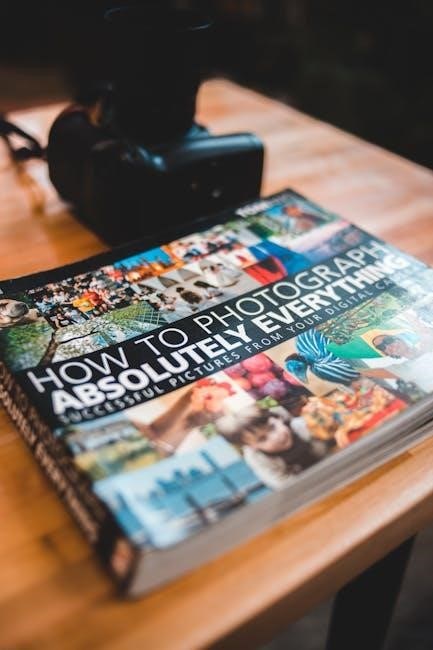F. Scott Fitzgerald’s The Great Gatsby is a seminal work of 20th-century literature, set in the Jazz Age, exploring themes of love, greed, and the American Dream.
The Great Gatsby is set in the Jazz Age of the 1920s, primarily in New York City and the fictional Long Island towns of West Egg and East Egg. The vibrant, decadent atmosphere of the Roaring Twenties provides a backdrop for themes of wealth, class, and moral decay. Fitzgerald’s depiction of this era highlights the contrast between old money and new riches, as well as the social stratification of the time.
Author’s Intent and Major Concerns
F. Scott Fitzgerald’s primary intent in The Great Gatsby was to critique the excesses and superficiality of the wealthy elite during the Jazz Age. He explores themes of love, greed, and the corrupting influence of wealth, while also examining the illusion of the American Dream. Fitzgerald’s work reflects his concern with the moral decay and social stratification of the time, offering a cautionary tale about the emptiness of materialism.
The Great Gatsby follows Jay Gatsby’s pursuit of Daisy Buchanan, lost love, amidst the opulence of 1920s New York. Narrated by Nick Carraway, it unfolds tragic consequences of obsession, class, and illusion, culminating in Gatsby’s doomed dream and the novel’s poignant conclusion.
Key Events and Their Significance
Gatsby’s central aim is to reunite with Daisy, symbolizing his pursuit of an unattainable past. Nick’s meeting of Myrtle Wilson reveals societal hypocrisy. Gatsby and Daisy’s reunion highlights lost love’s futility; The tragic car accident and George Wilson’s revenge underscore the destructive consequences of class divides and obsession. These events collectively illustrate the corrupting influence of wealth and the elusiveness of the American Dream, central to Fitzgerald’s critique of societal illusion.
F. Scott Fitzgerald crafts complex characters like Jay Gatsby, Daisy, Tom, and Nick, each embodying themes of wealth, love, and illusion, reflecting the novel’s deeper societal critique.
Major Characters: Gatsby, Daisy, Tom, Nick
Jay Gatsby, a self-made millionaire, pursues Daisy Buchanan, embodying the elusive American Dream. Daisy, torn between Gatsby and her husband Tom, symbolizes wealth and lost love. Tom, arrogant and powerful, represents old money and corruption. Nick Carraway, the narrator, acts as a moral compass, observing the decadence of the Jazz Age while staying relatively grounded amid the chaos surrounding him.
Minor but Impactful Characters
Myrtle Wilson, trapped in a lower-class life, embodies the corrupting influence of wealth and desire. Her tragic fate highlights the societal divide. George Wilson, her husband, seeks revenge, driving the novel’s climax. Jordan Baker, a modern woman, reflects moral ambiguity and dishonesty. Even minor figures like the Wilsons’ dog contribute to the unfolding tragedy, symbolizing the destructive forces beneath the surface of luxury and excess in 1920s America.
Themes in The Great Gatsby
The novel explores themes of the American Dream, wealth, and corruption, revealing moral decay beneath the surface of luxury and excess in 1920s society.
The American Dream and Its Illusion
The novel critiques the American Dream through Gatsby’s pursuit of wealth and love. Gatsby, a self-made man, believes in transcending his humble origins. However, Fitzgerald reveals the Dream’s elusiveness, as Gatsby’s efforts to win Daisy ultimately fail. The green light across the water symbolizes this unattainable goal, highlighting the illusion of social mobility and the corrupting influence of wealth in the Jazz Age.
Social Stratification and Class Differences
Fitzgerald portrays a rigid social hierarchy in the 1920s, emphasizing the divide between old money and new rich. Characters like Tom and Daisy embody the aristocracy, while Gatsby represents the self-made elite. The setting of West Egg and East Egg highlights class distinctions, with East Egg symbolizing tradition and West Egg, nouveau riche. Fitzgerald critiques the barriers between classes, showing how characters like Myrtle struggle to transcend their lower status, revealing the era’s social rigidity.
Symbolism and Motifs
The green light across the water symbolizes Gatsby’s elusive American Dream, while the eyes of Doctor T.J. Eckleburg represent divine judgment and moral oversight.
Prominent Symbols and Their Meanings
The green light across the water symbolizes Gatsby’s elusive American Dream, while the eyes of Doctor T.J. Eckleburg represent divine judgment and moral decay. The Valley of Ashes signifies corruption between wealth and poverty. Color symbolism, such as gold and white, reflects purity and illusion, while the fading light at the end embodies lost hope and the disintegration of Gatsby’s aspirations.

Study Resources and Aids
Various study guides and infographics provide summaries, analyses, and insights into The Great Gatsby, helping students explore themes, symbols, and character development effectively.
Recommended Study Guides and Summaries
Premium resources like York Notes and SparkNotes offer detailed analyses of The Great Gatsby, providing chapter summaries, theme explanations, and character insights. These guides are tailored for A-Level preparation, featuring extract analysis and study tips to enhance understanding. Additionally, video lessons and infographics simplify complex concepts like symbolism and motifs, making them ideal for both students and educators seeking comprehensive study aids.
F. Scott Fitzgerald’s The Great Gatsby is a timeless novel set in the Jazz Age, exploring themes of love, greed, and the American Dream through Jay Gatsby’s pursuit of Daisy Buchanan. This study guide provides essential resources for analysis, including summaries, character insights, and thematic discussions, perfect for literature students and enthusiasts alike.
Background and Setting
The Great Gatsby is set in the Jazz Age of the 1920s, primarily in New York City and the fictional Long Island towns of West Egg and East Egg. These locales contrast old money (East Egg) with new riches (West Egg), reflecting societal divisions. The vibrant yet corrupt atmosphere of the Roaring Twenties provides the backdrop for Gatsby’s tragic pursuit of Daisy, mirroring the era’s excesses and illusions.
Author’s Intent
F. Scott Fitzgerald aimed to critique the illusion of the American Dream, revealing its emptiness beneath the glamour of wealth. Through Gatsby’s journey, he exposed the social stratification and moral decay of the Roaring Twenties, highlighting the corrupting influence of power and the futility of chasing an unattainable past; Fitzgerald’s work serves as a cautionary tale about the darker side of ambition and materialism.
Plot Summary
The Great Gatsby follows Jay Gatsby’s pursuit of Daisy Buchanan, lost love, amidst the Jazz Age’s opulence. Narrated by Nick Carraway, it unfolds into tragedy, revealing the emptiness of wealth and the elusiveness of the past.
Key Events
Gatsby’s dream of reuniting with Daisy drives the narrative. Nick facilitates their meeting, reigniting their romance. Tensions rise with Tom, who discovers Gatsby’s true identity. Myrtle’s death, caused by Daisy, escalates the conflict. George seeks revenge, mistakenly killing Gatsby. Daisy returns to Tom, leaving Gatsby’s dream shattered. The tragic conclusion underscores the futility of chasing the past and the corrupting influence of wealth, marking the end of an era.

Character Analysis
Jay Gatsby, a self-made millionaire, pursues Daisy Buchanan, embodying the elusive American Dream. Tom Buchanan represents old-money privilege and corruption, while Nick Carraway serves as the moral compass.
Major Characters
Jay Gatsby, a mysterious millionaire, symbolizes the pursuit of the American Dream, driven by his longing for Daisy Buchanan. Daisy, delicate yet indecisive, embodies the elusiveness of Gatsby’s vision. Tom Buchanan, Daisy’s husband, represents old-money privilege and corruption. Nick Carraway, the narrator, acts as a moral guide, offering an outsider’s perspective on the morally complex world of East Egg and West Egg.
Minor Characters
Myrtle Wilson, Tom’s working-class mistress, symbolizes the class divide and her longing for a better life. George Wilson, Myrtle’s husband, is a tragic figure seeking justice for his wife’s death. Jordan Baker, Daisy’s friend and a professional golfer, represents the new, independent woman but also embodies dishonesty. Owl Eyes, a guest at Gatsby’s parties, serves as an observer, offering insights into the moral decay of society.

Themes
Central themes include American Dream illusions, social stratification, and corruption. These explore the Jazz Age’s excesses and moral decay, reflecting Fitzgerald’s critique of wealth and class.
The American Dream
The American Dream is a central theme, symbolizing hope and illusion. Gatsby’s pursuit of Daisy embodies the Dream’s promise of love and wealth, yet reveals its elusiveness. Fitzgerald critiques the idea that material success guarantees happiness, showing how Gatsby’s wealth fails to bridge social divides. The Jazz Age’s excess and moral decay highlight the Dream’s corruption, making it a poignant commentary on society’s追求 of an unattainable ideal. The novel underscores the tension between aspiration and reality.
Social Class
Fitzgerald explores the rigid social stratification of the Jazz Age, contrasting old money with new wealth. The divide between East Egg and West Egg symbolizes class divisions, while characters like Tom embody aristocratic entitlement. Gatsby’s rags-to-riches story highlights the barrier between classes, despite his wealth. The novel critiques the social elite’s moral decay and the illusion of upward mobility, as seen in Myrtle’s failed aspirations, underscoring the era’s deep-seated class prejudices and inequalities.

Symbolism
Fitzgerald masterfully uses symbols like the green light, Dr. T.J. Eckleburg’s eyes, and the color white to represent elusive hope, moral judgment, and purity in Gatsby’s world.
Green Light and Eyes
The green light across the water symbolizes the elusive American Dream and Gatsby’s longing for Daisy, while Dr. T.J. Eckleburg’s giant eyes on the billboard represent moral judgment and divine oversight. These symbols highlight the tension between hope and corruption, reflecting the novel’s exploration of illusion versus reality.
Study Resources
York Notes for A-Level offers detailed analyses of key passages, helping students achieve top grades and deeply understand themes and symbols in The Great Gatsby.
Guides and Summaries
Study guides for The Great Gatsby provide comprehensive summaries, in-depth analyses, and explanations of key themes, symbols, and characters. York Notes offers detailed extracts and insights to aid A-Level preparation, while infographics visually break down complex concepts. Video lessons cover literary devices, themes, and character development, making it easier for students to grasp the novel’s nuances. Online resources also include full-text summaries and analyses of important quotes, enhancing understanding of Fitzgerald’s masterpiece.
